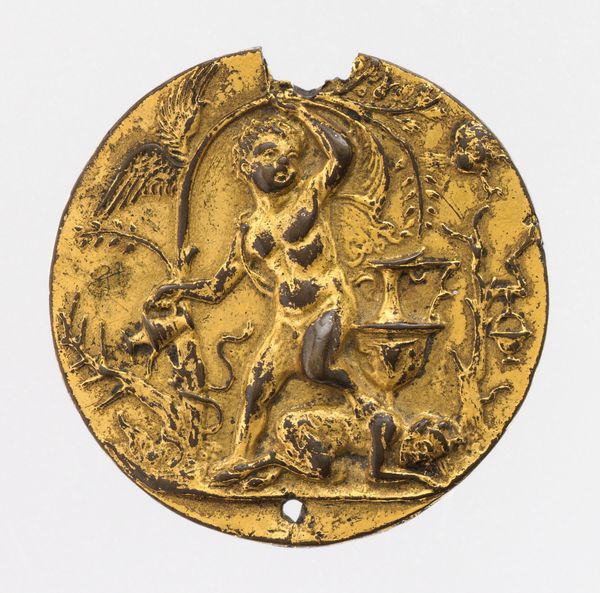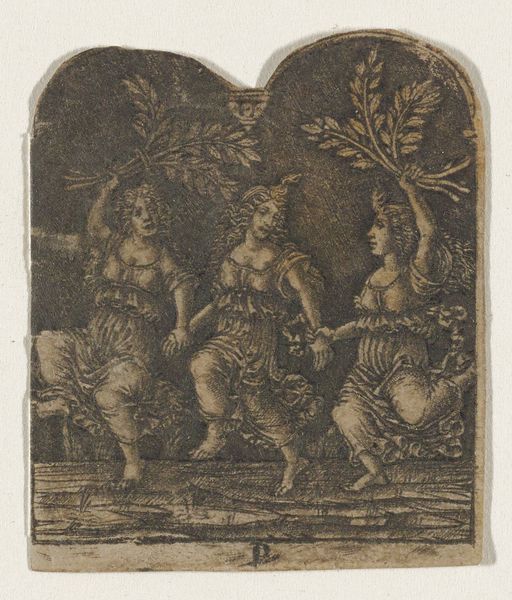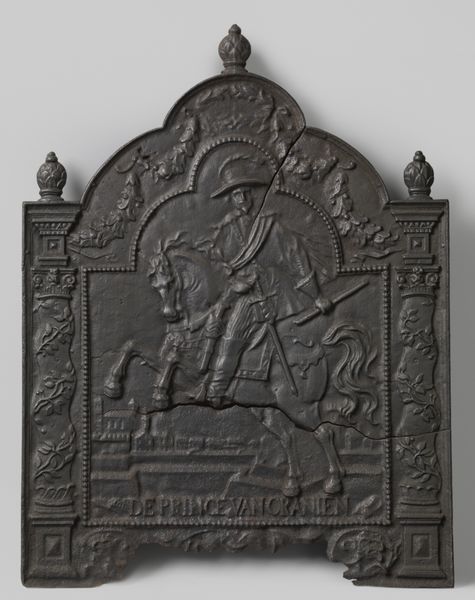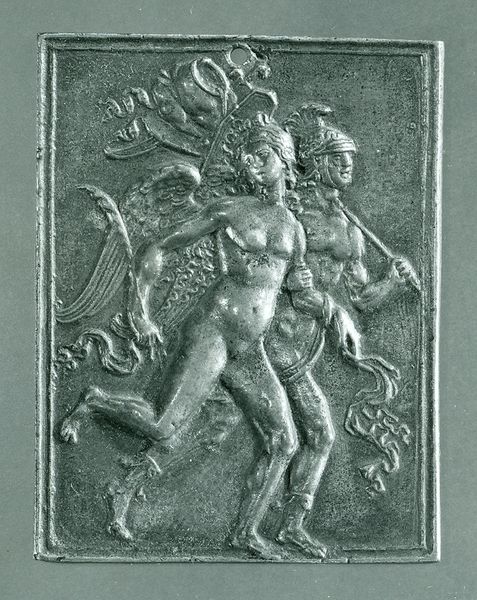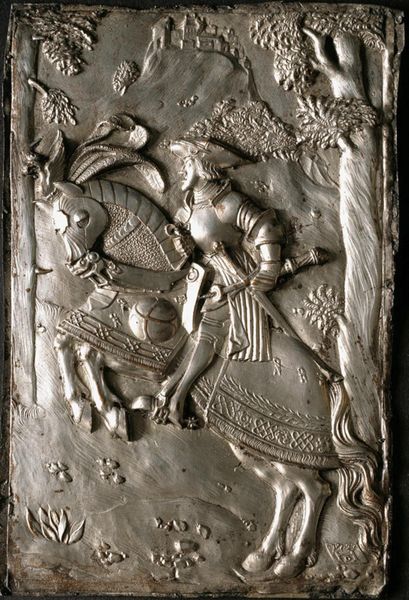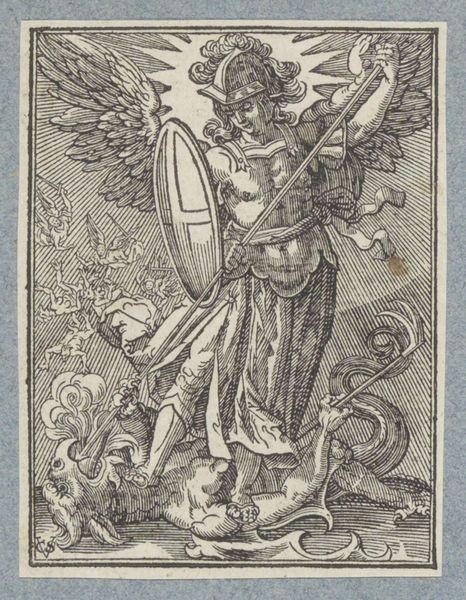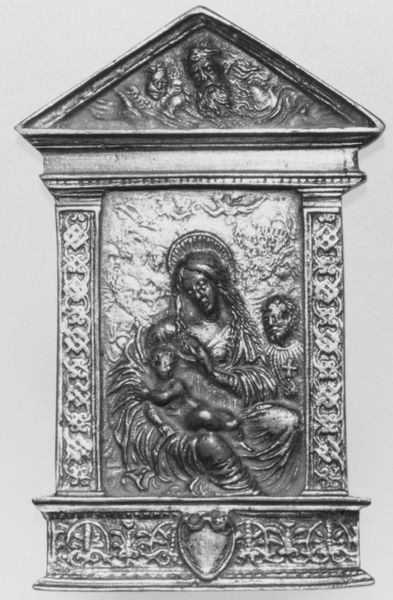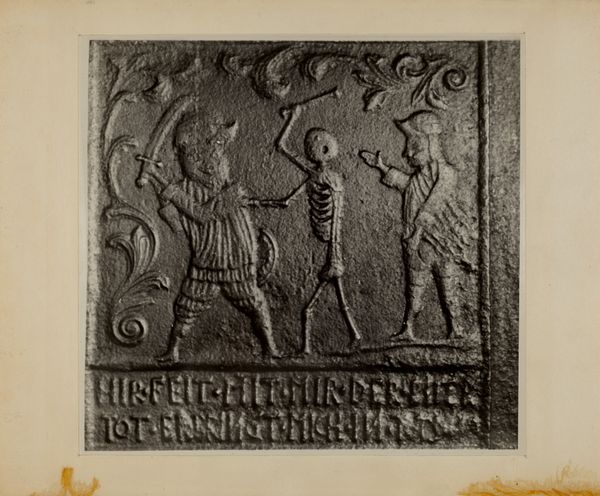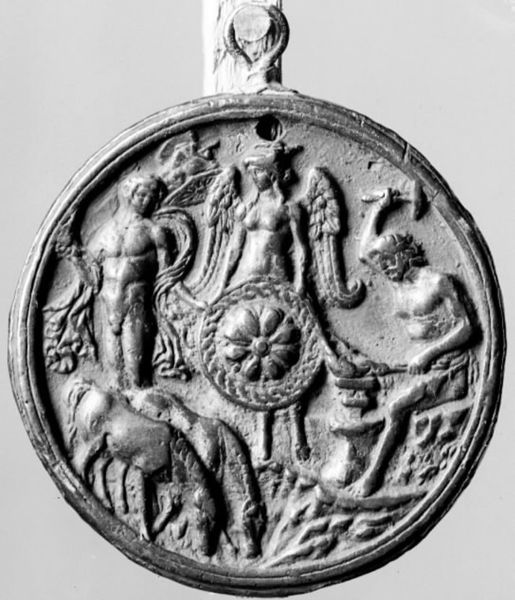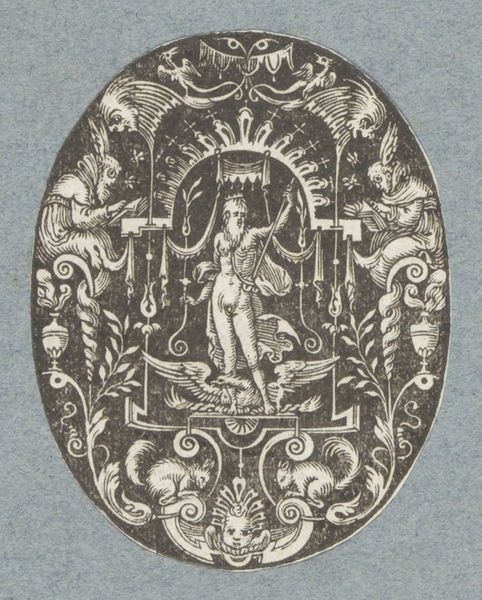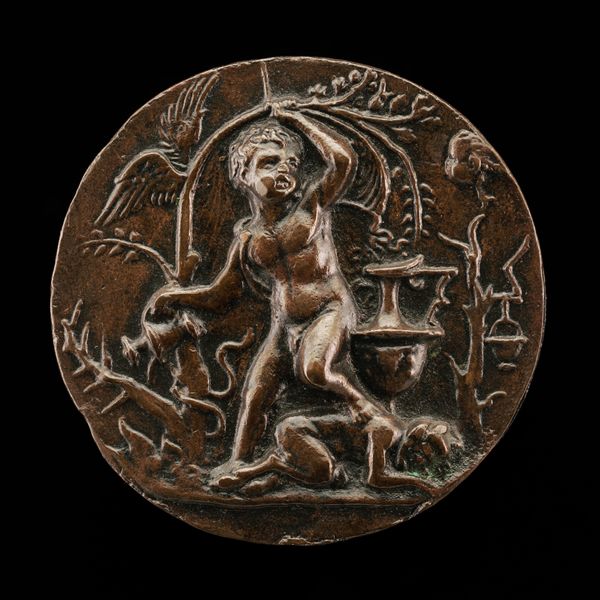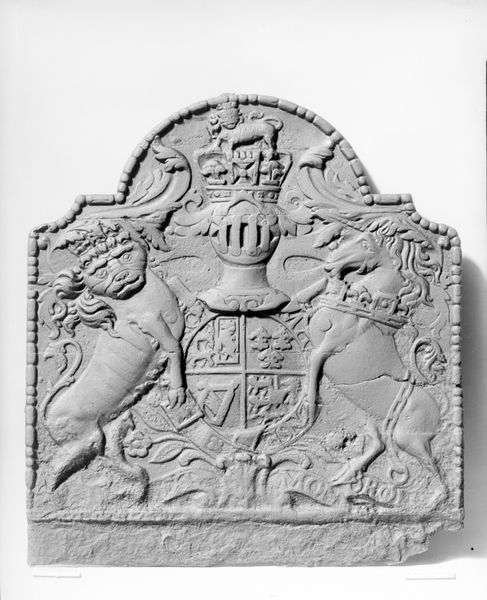
bronze, sculpture
#
stone
#
sculpture
#
asian-art
#
bronze
#
sculptural image
#
figuration
#
ancient-mediterranean
#
sculpture
#
statue
Dimensions: height 10.8 cm, width 7.0 cm, depth 3.9 cm
Copyright: Rijks Museum: Open Domain
Editor: Here we have a bronze sculpture, Shiva Nataraja, created sometime between 1200 and 1300. I'm immediately struck by the dynamic pose, this sense of controlled energy. What do you see in this piece, especially concerning its broader significance? Curator: This Shiva Nataraja isn't just a depiction of a deity; it's a powerful assertion of cosmic interconnectedness. The ring of fire, or prabhamandala, symbolizes the cyclical nature of time, creation and destruction. The dance itself transcends mere aesthetics; it's an act of resistance against the entropic forces that threaten to unravel the universe. Consider the raised foot—symbolically offering refuge, a potent statement against earthly suffering in a time marked by intense social hierarchies and inequalities. How does that resonate with our present struggles? Editor: I suppose seeing it as resistance gives it a new layer. I always thought of it as more of a personal, spiritual expression. Curator: And that's valid, but shouldn't we also explore the political undertones embedded within religious iconography? These sculptures often served to legitimize rulers and reinforce social structures. But within that framework, they also offered a visual language for expressing dissent or advocating for a more just world, albeit often coded. Think about the figures beneath Shiva’s feet, crushed, and think of that placement and those figures as representations of destructive tendencies. Editor: That makes sense. I hadn’t thought of it in terms of political and social commentary before. Curator: Precisely. By engaging with these complexities, we gain a deeper understanding of not just the art but also the society that birthed it. It allows us to see the interplay between power, spirituality, and resistance—themes that continue to shape our world. Editor: I’ll definitely look at art differently from now on. Curator: Wonderful! The goal isn’t to decode a singular "true" meaning, but to appreciate the rich tapestry of interpretations that emerge when we situate art within its complex social and historical contexts.
Comments
rijksmuseum about 2 years ago
⋮
Nataraja, King of Dancers, is one of the best-known manifestations of Shiva. This form probably originated in the 9th or 10th century, in southeast India (the present state of Tamil Nadu), and became very popular under the rule of the Cholas (9th-13th century). In addition to the large Natarajas in temples, small statues were also made, probably intended for house altars.
Join the conversation
Join millions of artists and users on Artera today and experience the ultimate creative platform.
